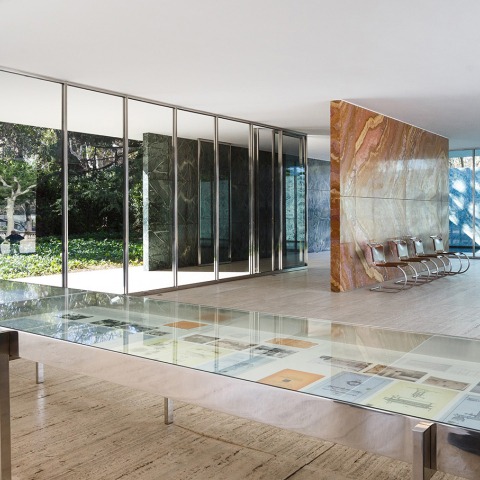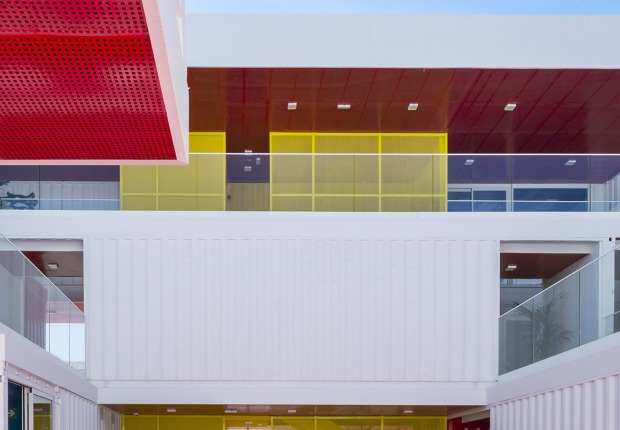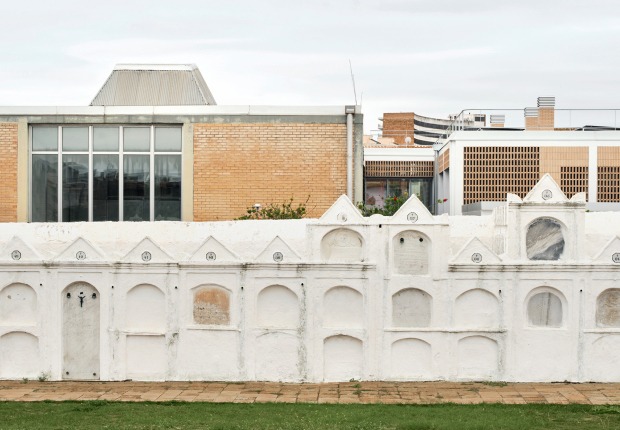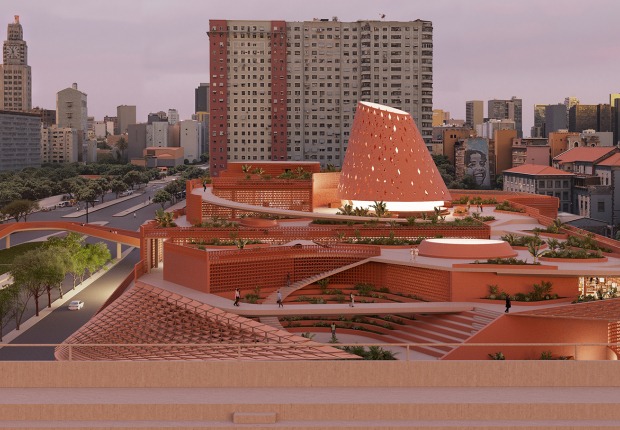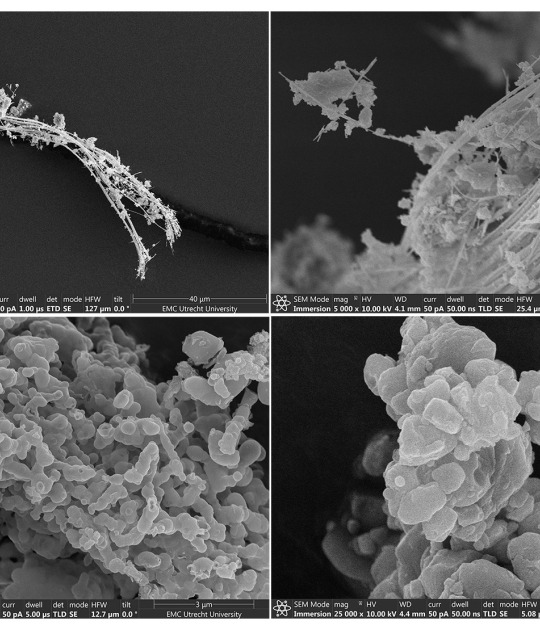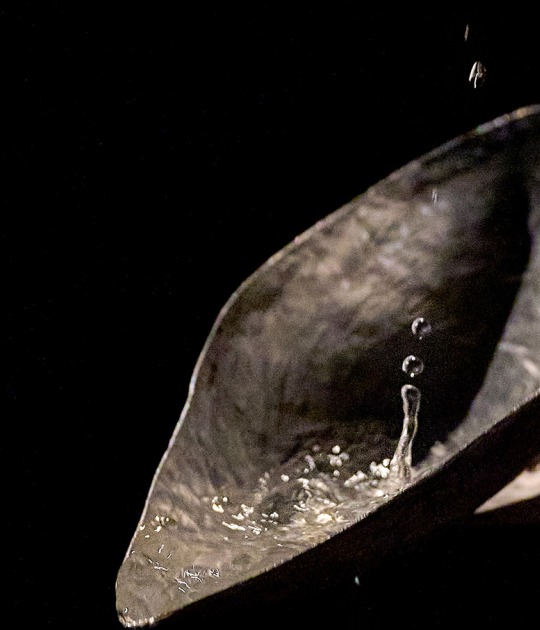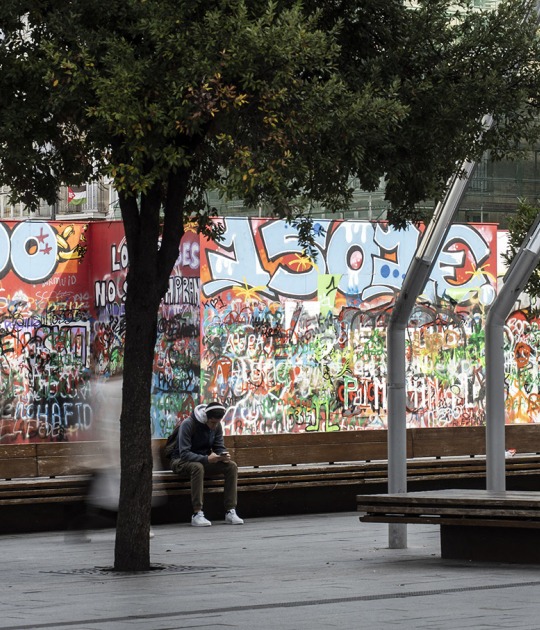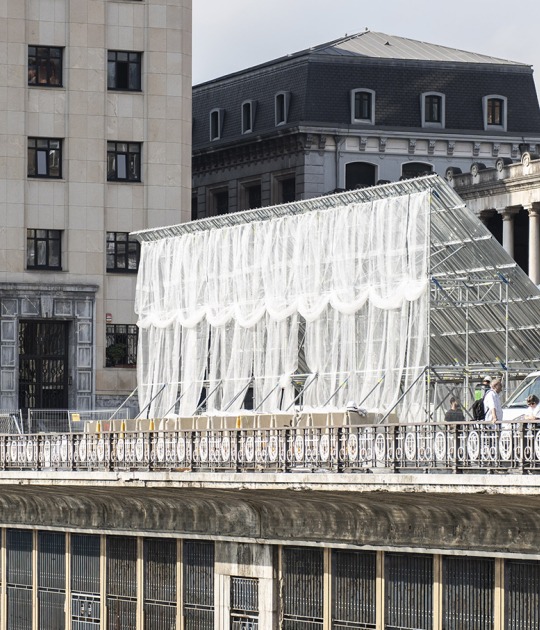The story told so far about Pavilion is incomplete referring Lilly Reich’s work. Re-enactment reconstructs two showcases such as those designed by Lilly Reich and transforms in an unusual way the space experience of the Pavilion thus claiming its link with Lilly Reich's work in the Novecentista Palaces of Montjuïc.
The exhibition “Re-enactment” makes visible the work and architecture that Lilly Reich projected for the German sections of the International Exposition of 1929 inside eight Noucentista palaces, an area that is fifty times larger in magnitude than the Pavilion itself.
For the first time the legacy of the German designer becomes visible through a historical and documentary reconstruction that brings together letters, photographs, patents, brands, plans and projections, some of them unpublished, from different private archives and collections.
Re-enactment occupies the heart of the Pavilion with the reconstruction of two of the display cases that were originally conceived for the Palaces thanks to the blueprints that Lilly Reich was able to save moving them to Mühlhausen (Thuringia) during World War II, the originals of which are part of the Lilly Reich Collection of the Mies Van Der Rohe Archive in the Museum of Modern Art in New York (MoMA).
"Being able to gather all this material and documentation, including unpublished photographs, at the German Pavilion in Barcelona is an exceptional fact. For the first time you can see the design and architecture that Lilly Reich created to characterize the German Sections at the 1929 International Exposition, according to a clear thread. It was a visual and spatial system to present more than 300 companies and industries in eight different Palaces in which the display cabinets, now rebuilt in the Pavilion, played a key role.”
Laura Martinez de Guereñu
The intervention transforms the Pavilion by removing double-gazed screen and making the skylight, that originally established the hierarchic differences between the inside space (restricted to the authorities) and the popular outside space (where general public could sit). A horizontal display-case is settled in its place that suggests an unusual path inside the Palaces, shown by documents (letters, pictures, patents, hallmarks and blueprints) from a dozen different archives and private collections from Barcelona, Berlin, Dessau, Frankfurt, Madrid, Sevilla and Weimar. The intervention recovers the “great photos of Barcelona” that Lilly Reich herself regretted losing in a bombing in Berlin and that show how her display-cases accomplished the scalar transition from the great variety of German products to the very diverse spatial structures of the Palaces.
A second display-case is added to the visitor’s path to the inner pond and highlights the importance of the immaterial heritage of the work performed in Barcelona, showing the Pavilion as an anteroom to more than 16.000m2 of industrial exhibitions. One of them is the original film by Ramón de Baños (from 1929) kept in the Filmoteca de Catalunya; the other one is part of a recovery project by Begoña Soto-Vázquez for the Filmoteca Española in 2009, as a commemoration of the 90th anniversary of the Iberamerican Exposition in Seville.The location of the vertical display-case offers to the two films points of view coinciding with the moving image and the same experience of the Pavilion in a game that transports us to 1929.
"Thanks to this research, we now know much more about Lilly Reich's great work in Barcelona for the International Exposition of 1929. The intervention resulting from the 1st Lilly Reich Grant for Equality in Architecture makes visible the contributions of this pioneer, filling in holes that historiography of architecture has forgotten, and returns to Barcelona a part of its history."
Anna Ramos
